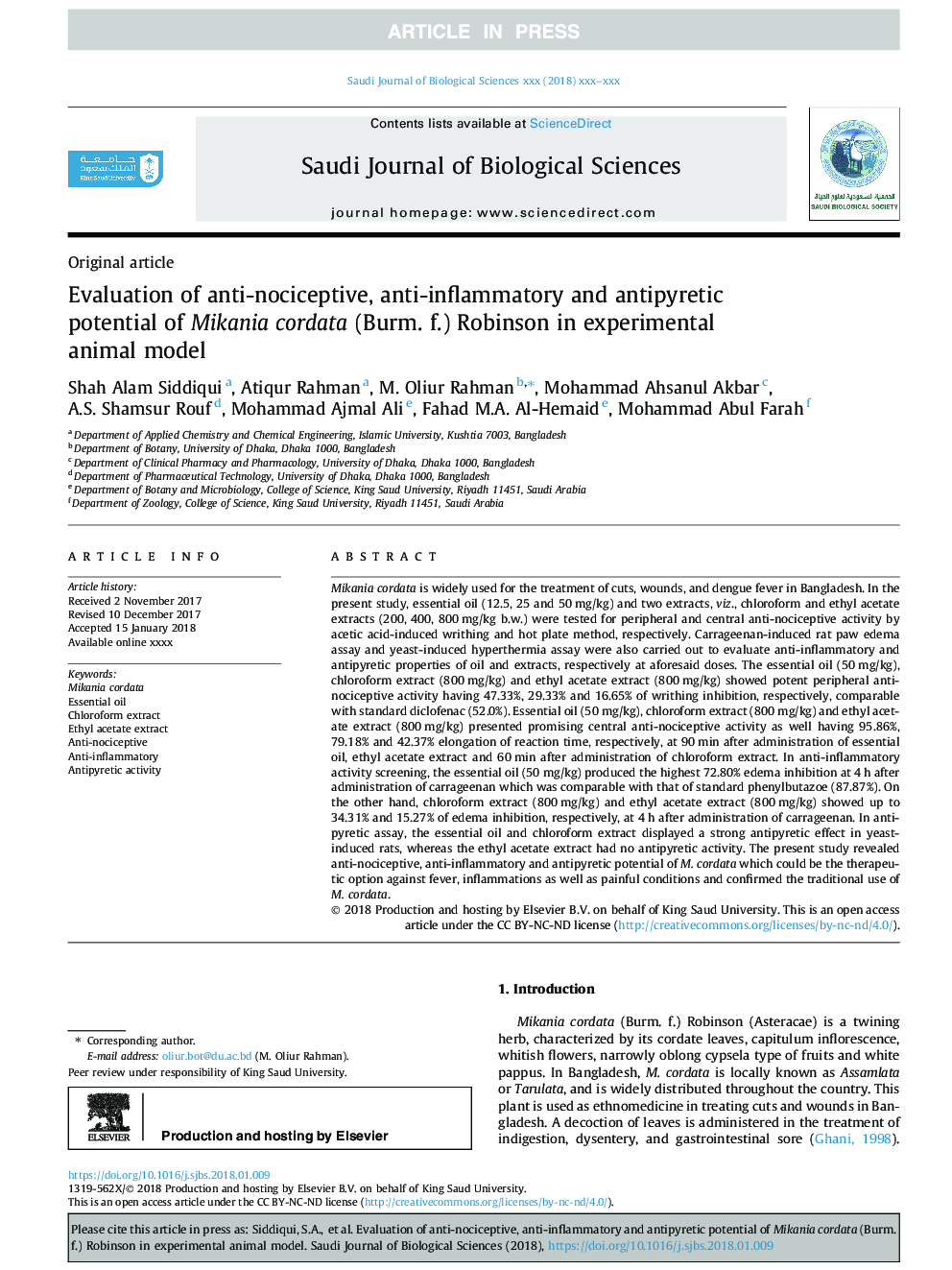| Article ID | Journal | Published Year | Pages | File Type |
|---|---|---|---|---|
| 8959266 | Saudi Journal of Biological Sciences | 2018 | 7 Pages |
Abstract
Mikania cordata is widely used for the treatment of cuts, wounds, and dengue fever in Bangladesh. In the present study, essential oil (12.5, 25 and 50â¯mg/kg) and two extracts, viz., chloroform and ethyl acetate extracts (200, 400, 800â¯mg/kg b.w.) were tested for peripheral and central anti-nociceptive activity by acetic acid-induced writhing and hot plate method, respectively. Carrageenan-induced rat paw edema assay and yeast-induced hyperthermia assay were also carried out to evaluate anti-inflammatory and antipyretic properties of oil and extracts, respectively at aforesaid doses. The essential oil (50â¯mg/kg), chloroform extract (800â¯mg/kg) and ethyl acetate extract (800â¯mg/kg) showed potent peripheral anti-nociceptive activity having 47.33%, 29.33% and 16.65% of writhing inhibition, respectively, comparable with standard diclofenac (52.0%). Essential oil (50â¯mg/kg), chloroform extract (800â¯mg/kg) and ethyl acetate extract (800â¯mg/kg) presented promising central anti-nociceptive activity as well having 95.86%, 79.18% and 42.37% elongation of reaction time, respectively, at 90â¯min after administration of essential oil, ethyl acetate extract and 60â¯min after administration of chloroform extract. In anti-inflammatory activity screening, the essential oil (50â¯mg/kg) produced the highest 72.80% edema inhibition at 4â¯h after administration of carrageenan which was comparable with that of standard phenylbutazoe (87.87%). On the other hand, chloroform extract (800â¯mg/kg) and ethyl acetate extract (800â¯mg/kg) showed up to 34.31% and 15.27% of edema inhibition, respectively, at 4â¯h after administration of carrageenan. In antipyretic assay, the essential oil and chloroform extract displayed a strong antipyretic effect in yeast-induced rats, whereas the ethyl acetate extract had no antipyretic activity. The present study revealed anti-nociceptive, anti-inflammatory and antipyretic potential of M. cordata which could be the therapeutic option against fever, inflammations as well as painful conditions and confirmed the traditional use of M. cordata.
Keywords
Related Topics
Life Sciences
Environmental Science
Ecology
Authors
Shah Alam Siddiqui, Atiqur Rahman, M. Oliur Rahman, Mohammad Ahsanul Akbar, A.S. Shamsur Rouf, Mohammad Ajmal Ali, Fahad M.A. Al-Hemaid, Mohammad Abul Farah,
